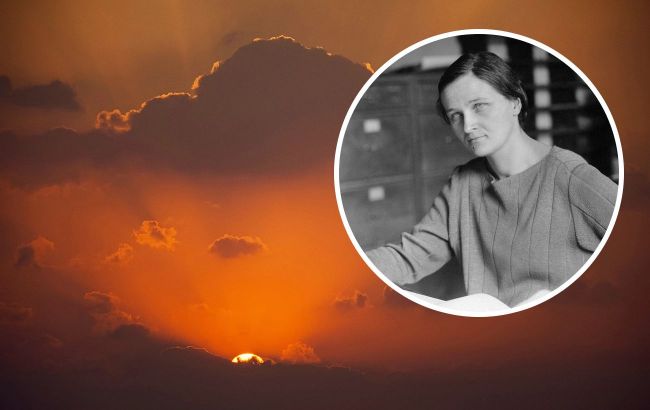Women's inventions and discoveries mistakenly attributed to men
 Women's inventions and discoveries that were wrongly attributed to men (collage RBC-Ukraine)
Women's inventions and discoveries that were wrongly attributed to men (collage RBC-Ukraine)
Many useful things we use today were invented by women. However, their inventions were attributed to men - intentionally or mistakenly - because it was once believed that a woman could not invent Kevlar or a dishwasher.
Here is the list of inventions and discoveries by women that were attributed to men.
The preparation of the material used sources: Wikipedia, BBC, and the book "Invisible Women" by Caroline Criado Perez.
Composer Felix Mendelssohn published six works by his sister Fanny Mendelssohn under his name. In 2010, it was proven that she wrote another score that had been attributed to her brother.
Judith Leyster, one of the first Dutch women to be admitted to the guild of painters, was popular during her lifetime. However, after she died in 1660, she was forgotten, and her works began to be attributed to her husband.
Many textbooks state that the discovery of the role of chromosomes in determining the sex of an embryo belongs to Thomas Hunt Morgan, although in reality, the experiments on fruit flies were conducted by Nettie Stevens.
Cecilia Payne-Gaposchkin's discovery that the sun is mainly composed of hydrogen is often attributed to her male scientific supervisor.
There is a version that even physicist Albert Einstein appropriated the discovery of his wife - Mileva Marić. And that she substantiated the theory of relativity.
The acoustic filter (muffler) was invented by El Dolores Jones in 1917. She just wanted the world around us to be a little quieter. The first cars were produced without mufflers at all - can you imagine how much noise they created on the road: they scared horses, and people, and generally made it difficult to live peacefully.
El Dolores Jones fixed the situation by inventing an acoustic filter for car engines. The invention was patented in 1917 and was installed on all cars.
Tabitha Babbitt observed men sawing wood with a special saw with two handles that needed to be pulled back and forth. Although the load on both men was the same, the logs were sawn only when the saw moved forward, and nothing happened when it moved backward with the log.
Babbitt thought this was a waste of energy and in 1810 created a prototype of a circular saw, which later became used in the lumber industry.
Mary Anderson invented the first windshield wipers for cars. She felt sorry for the trolley driver who had to stop the car every minute during a snowstorm to clear the snow from the windshield.
Mary created a model of controlled wipers that were attached to the windshield and patented it in 1903. Car companies rejected the invention because they believed it would distract drivers from focusing on the road.
Anderson never received any profit from her invention, even when wipers became a common feature of car design.
In 1965, Dr. Stephanie Kwolek invented the synthetic material Kevlar, which is five times stronger than steel. Her invention saved thousands of lives of police officers, firefighters, and military personnel. Kevlar became the basis for bulletproof vests.
Thanks to Melitta Bentz, coffee lovers are spared the tedious process of preparing a second or third cup. Melitta handcrafted the first cone coffee filter from a piece of her son's notebook paper in 1908.
A big coffee lover, Melitta Bentz couldn't accept that the last sip from the cup always contained more coffee grounds than coffee. She pierced the bottom of a brass pot and placed a filter paper from her son's notebook inside.
This is how the coffee filter was invented. On June 20, 1908, she received a patent for her invention as a utility model. The world-renowned German company Melitta, a manufacturer of coffee filters, is named after this woman.
Sculptor Patricia Billings set out to create a cement additive that would prevent her creations from deteriorating. After several years of experiments, in 1970, she finally achieved her goal by inventing an indestructible plaster - silicone. Shortly thereafter, Billings discovered that the material was also remarkably fire-resistant.
The instrument for measuring the coordinates of celestial bodies (astrolabe) was invented by the female scientist, philosopher, astronomer, and mathematician Hypatia of Alexandria in 370 BC.
English mathematician Ada Lovelace, born in 1815, wrote the first program for a computer, even though computers existed only in theory at that time. Lovelace's code was an algorithm for calculating Bernoulli numbers, and it was applied to real devices 100 years later. Ada introduced the terms loop and working cell, and in the 20th century, a programming language was named Ada in her honor.
Josephine Cochrane, after missing several plates from her favorite porcelain set, created a machine that only washes dishes without breaking them. This happened in 1886, but it was only recognized as a necessary household item 40 years later.
Ellen Eglin invented the drum for the washing machine, and in 1888, she sold the patent for her invention for $18, stating that no one would buy the washing machine if they knew it was patented by a black woman.
"Cleanness should be not only in the house but also on the streets," thought ordinary secretary Cynthia Westover who gathered the grandfathers of modern street snow-cleaning machines in 1892.
Marie Curie, a French scientist of Polish descent, together with her husband Pierre, discovered the chemical elements polonium and radium in 1898.
Marion Donovan, a tired mother and housewife, sat down at her sewing machine with a shower curtain in 1917 and, after several attempts, created waterproof coverings for diapers. Unlike rubber pants, which were already on the market, Donovan's diapers did not cause rashes and did not squeeze the delicate skin of the child.
Alice H. Parker, an African-American woman, invented the gas-heating furnace back in 1919. Thanks to this invention, millions of people can still affordably heat their homes.
The Parker boiler was easily installed in heating networks, rather than used locally like previous models and quickly found application in apartment buildings.
Hedy Lamarr, a Hollywood actress of Austrian descent, was not only a strikingly beautiful woman but also a successful inventor. In 1942, she devised a communication system in which the channel for signal transmission was dynamically changed.
The technology of frequency hopping spread spectrum received the name Secret Communication System and was used for remote control of torpedoes to make them impossible to intercept. Today, it is used in mobile communication and Wi-Fi.
Jesse Cartwright is credited with many innovations in household appliances: creating the first model of the Radarange microwave oven at the time and automating the mechanical washing machine. Modern washing machines are programmed devices, for which society owes thanks to Jesse.
Bette Nesmith Graham is known as the inventor of Liquid Paper, a correction fluid designed to correct typewriter errors. Once, watching painters at work, Bette thought that errors could simply be painted over. And that's how this invention came about.
The creation of the world's most popular board game, Monopoly, is often attributed to Charles Darrow. But in reality, its rules were invented by Elizabeth Magie.
Ms. Magie wanted to demonstrate the problems of capitalism through an innovative game in which players traded fake property and money. She patented her development in 1904 under the name The Landlord's Game.
Monopoly in its modern form was first released by Parker Brothers in 1935. Representatives of the company found that Mr. Darrow was not the sole creator of the game. For about $500, he bought the patent from Elizabeth Magie and effectively monopolized the game.
Earlier, we talked about accidental inventions that are essential for modern life.
We also discussed ancient inventions that were ahead of their time.

